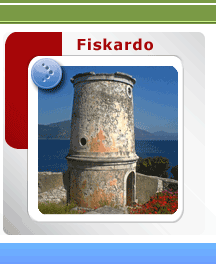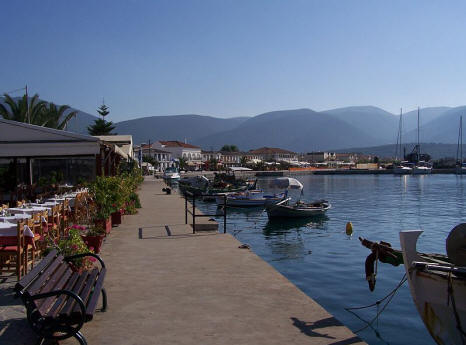Eco-Tourism Greece: Complete Guide to Sustainable Wildlife & Nature Adventures
Greece offers extraordinary eco-tourism opportunities, from the dark skies of Mount Ainos National Park to the birdwatching havens of the Ionian Islands. However, as real visitors have discovered, successful eco-tourism requires careful planning to avoid common pitfalls. This comprehensive guide transforms years of visitor feedback, complaints, and hard-learned lessons into practical advice for unforgettable sustainable adventures.
🌟 Real Visitor Insights
Based on analysis of TripAdvisor reviews, YouTube experiences, hiking forums, and birdwatching tour feedback, this guide addresses the actual problems eco-tourists face in Greece.
Mount Ainos National Park: Kefalonia's Eco-Tourism Crown Jewel

Mount Ainos, standing at 1,628 meters, represents one of Greece's most important eco-tourism destinations. However, visitors frequently encounter unexpected challenges. A recent Facebook post warned: "Mount Ainos trail closed due to fire, hikers asked to leave, fire trucks and planes in attendance." This reality highlights why preparation is crucial.
⚠️ Common Problems & How to Avoid Them
🔥 Fire Closures (June-September)
The Problem: Unexpected trail closures due to wildfire risk, leaving visitors stranded with no alternative plans.
The Solution: Check the official Mount Ainos National Park Facebook page before traveling. Contact local authorities at +30 26740 22200 for real-time status updates. Always have backup indoor activities planned during high-risk periods.
🚪 Gate Access Confusion
The Problem: Visitors arrive to find "Gate is closed and says sunrise to sunset, google says 8am-8pm" causing frustration and wasted travel time.
The Solution: Official hours are sunrise to sunset (approximately 6:30 AM to 8:30 PM in summer, 7:30 AM to 6:00 PM in winter). Gates close 30 minutes before sunset. Plan arrival at least 2 hours before closing to allow adequate hiking time.
👟 Trail Surface Hazards
The Problem: "The gravel can be a bit slippery so wear good hiking shoes and the steps up to the highest point aren't for the unfit."
The Solution: Invest in proper hiking boots with aggressive tread. The final summit approach includes hand rails and log steps, but requires moderate fitness. Consider the intermediate viewpoints (1,200m elevation) if the full summit seems challenging.
🌡️ Weather Strategy for Mount Ainos
Temperature drops significantly with altitude - often 10-15°C cooler at the summit than sea level. Real visitor experience: "Pack layers as temperatures drop significantly with altitude." In January, expect daytime temperatures of 13°C at sea level but near-freezing conditions at the summit.
Seasonal Recommendations:
- April-May: Ideal hiking weather, wildflowers in bloom, clearest air visibility
- June-August: Hot at lower elevations, pleasant at summit, highest fire risk
- September-November: Perfect conditions, stable weather, autumn colors
- December-March: Possible snow at summit, limited access, dramatic winter landscapes
Birdwatching in Greece: Learning from Disappointments
Greece ranks as Europe's second-best birdwatching destination after Spain, yet many visitors leave disappointed. Professional guides warn: "Neither birds nor people like weather extremes. On the hottest days of the year...birds are not active." Understanding these realities transforms frustrating experiences into successful adventures.
🐦 Avoiding Common Birdwatching Mistakes
🌤️ Weather Timing Failures
The Problem: Booking tours during "torrential rains, hurricane-force winds" or extreme heat when birds remain hidden.
The Solution: Best times are early morning (6:00-9:00 AM) and late afternoon (4:00-7:00 PM). Avoid midday heat (11:00 AM-3:00 PM) when birds shelter. Spring migration (April-May) offers 60+ species in single mornings.
👕 Clothing Mistakes That Scare Birds
The Problem: Wearing "bright yellows, reds or white, as this can disturb wildlife and makes us very conspicuous."
The Solution: Choose earth tones - olive greens, browns, muted blues. Avoid rustling fabrics. Professional guides recommend Kefalonia's Outdoor Kefalonia company for properly equipped birdwatching tours targeting endemic species.
🏆 Success Story: Skyros Model
Skyros Island demonstrates how eco-tourism should work. After implementing "45 km of nature and culture trails and other visitor infrastructure" plus training "3 local tourism agencies...on the provision of ecotourism activities," Skyros became "the second best destination for birdwatching in Greece after Lesvos." This transformation shows what's possible with proper planning.
Kefalonia Eco-Tourism: Beyond the Tourist Traps
Kefalonia offers exceptional eco-tourism opportunities, but infrastructure challenges persist. Research reveals "tourists' dissatisfaction with ecotourism facilities and infrastructure in Greece, as they do not meet their expected standards." Here's how to navigate these challenges successfully.
🌊 Sea Kayaking & Marine Life

Sea kayaking around Kefalonia provides intimate wildlife encounters impossible from larger boats. Local operator reviews highlight: "Lunch was excellent consisting of local produce. We will definitely be going on another sea kayaking trip with Yvonne and her team next time we visit Kefalonia."
Recommended: Sea Kayaking Kefalonia Greece - Based in Argostoli, offering half-day tours focusing on marine conservation and traditional fishing methods. Tours include local organic lunches and snorkeling equipment.
🦌 Wildlife Watching Opportunities
Mount Ainos protects the rare Kefalonian wild horse, found nowhere else on Earth. These small, sturdy horses descended from ancient Greek breeds roam the mountain's upper slopes. Best viewing: early morning near the telecommunications towers.
Endemic Species to Watch For:
- Kefalonian Fir (Abies cephalonica): Ancient forest covering Mount Ainos slopes
- Loggerhead Sea Turtles: Nest on southern beaches May-August. Learn more about turtle conservation and volunteer opportunities in Kefalonia
- Mediterranean Monk Seals: Rare sightings around sea caves
- Eleonora's Falcons: Cliff-nesting raptors, best seen September-October
Practical Eco-Tourism Safety Guide
UK government travel advice specifically warns eco-tourists: "Trails often lack shade and the quality of route markings can vary." These official warnings, combined with visitor experiences, reveal critical safety considerations.
🎒 Essential Equipment Checklist
📱 Communication & Navigation
- Fully charged phone with offline maps (trails often lack cell service)
- GPS device or compass as backup
- Emergency whistle
- Share detailed itinerary with accommodation host
☀️ Sun & Heat Protection
- Wide-brimmed hat (essential - many trails lack shade)
- SPF 50+ sunscreen (Greek sun is intense even in winter)
- 3-4 liters of water per person (more in summer)
- Electrolyte tablets for longer hikes
⚡ Emergency Protocols
Greece's emergency number 112 works from any cell phone, but coverage is limited in remote areas. The Hellenic Rescue Team operates mountain rescue services. For eco-tourism emergencies:
- General Emergency: 112
- Tourist Police: 171
- Forest Fire Reporting: 191
- Coast Guard (marine incidents): 108
Sustainable Tourism Operators: Verified Recommendations
Based on visitor reviews and sustainable practices assessment:
🌟 Top-Rated Eco-Tourism Companies
Wild Nature Expeditions - Kefalonia
Specialties: Mount Ainos 4x4 Sunset Safaris, endemic species photography
Visitor feedback: "Had a great time on the Mount Ainos 4x4 Sunset Safari. The weather was mixed but not an issue and managed to get the sunset view overlooking the Robola valley."
Contact: +30 26740 28006
Ecotravel Kefalonia - Argostoli
Specialties: Daily island excursions, multilingual guides (Polish/English)
Focus: Small group eco-tours, traditional village visits
Base: Capital Argostoli for easy accessibility
Monthly Eco-Tourism Planner
Avoid the seasonal mistakes that disappoint many eco-tourists. Weather patterns significantly impact wildlife behavior and trail accessibility.
🗓️ Best Times for Specific Activities
January-February: Birdwatching peaks (wintering species), rough seas limit marine tours, mountain hiking requires experience
March-April: Wildflower season begins, spring migration starts, ideal hiking weather, sea temperatures still cool (15°C)
May-June: Perfect eco-tourism weather, nesting birds active, sea temperatures warming (20°C), longest daylight hours
July-August: Hottest months (31°C peaks), early morning/late evening activities only, sea turtle nesting season, fire risk highest
September-October: Autumn migration spectacular, comfortable temperatures return, grape harvest season, stable weather
November-December: Storm season begins, dramatic landscapes, fewer crowds, indoor activities necessary, rain increases (12 days in December)
Conservation Tourism: Making a Difference
True eco-tourism contributes to conservation. Kefalonia offers several opportunities to participate in meaningful environmental work:
🐢 Sea Turtle Conservation Projects
The Kefalonia Wildlife Foundation welcomes volunteers during nesting season (May-October). Activities include beach monitoring, nest protection, and hatchling releases. Accommodations available in Argostoli with daily transport to nesting beaches.
🌲 Forest Restoration Initiatives
Mount Ainos National Park organizes reforestation programs targeting fire-damaged areas. Volunteers plant endemic Kefalonian fir seedlings and construct wildlife water sources. Programs run March-May and September-November.
Avoiding the Infrastructure Problems
Academic research confirms "poor infrastructure such as means of transport and hotels that meet the green standards of hospitality" across Greece. Smart eco-tourists plan around these limitations:
🏨 Truly Sustainable Accommodations

Verified Green Hotels (Solar power, water recycling, local sourcing):
- Kefalonia Bay Palace: Renewable energy systems, though "views are great however there are some real issues" with location requiring car transport
- Local Agrotourism Farms: "Live like a Local Expedition by Louisa Farms" offers authentic farm stays with organic food production
🚗 Transportation Solutions
Public transport to eco-tourism sites is limited. Consider:
- Rental Cars: Essential for Mount Ainos and remote beaches
- Electric Bikes: Growing network of charging stations
- Organized Tours: Often more sustainable than individual car rental
- Island Hopping: Ferry connections improve environmental footprint
💡 Pro Tip from Experienced Eco-Tourists
"Book accommodation and tours through local operators who understand seasonal limitations. International booking sites often oversell during periods when trails are closed or weather is unsuitable."
Budget Planning for Eco-Tourism
Sustainable tourism often costs more upfront but provides better value. Based on visitor experiences:
Daily Budget Estimates (Per Person):
- Budget Eco-Tourism: €35-50 (hostels, self-guided hikes, public transport)
- Mid-Range Eco-Tourism: €60-90 (eco-hotels, guided tours, rental car)
- Luxury Eco-Tourism: €120+ (premium eco-lodges, private guides, exclusive experiences)
Major Cost Factors:
- Guided birdwatching tours: €80-120 per day
- Mount Ainos 4x4 safaris: €45-65 per person
- Sea kayaking half-day: €55-75 including equipment
- Conservation volunteer programs: €25-40 daily contribution
Conclusion: Your Eco-Tourism Success Strategy
Greece's eco-tourism potential is extraordinary, but success requires learning from others' experiences. The difference between disappointed visitors and thrilled eco-tourists lies in understanding the realities: infrastructure limitations, seasonal variations, safety requirements, and the importance of choosing experienced local operators.
By following this guide's practical advice - checking fire status before hiking, packing for temperature variations, timing activities for optimal wildlife viewing, and supporting legitimate conservation efforts - you'll experience Greece's natural wonders while contributing to their preservation.
Remember: the best eco-tourism happens when visitors come prepared, respect local limitations, and focus on quality experiences over quantity. Greece rewards patient, prepared travelers with memories that last lifetimes.
Ready to plan your eco-adventure? Start with our Complete Kefalonia Guide or explore specific activities in our Beach Guide and Blue Caves sections.